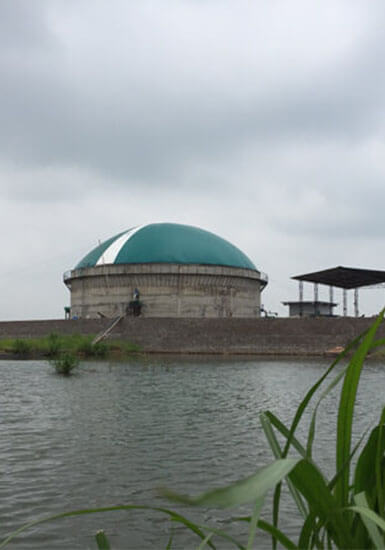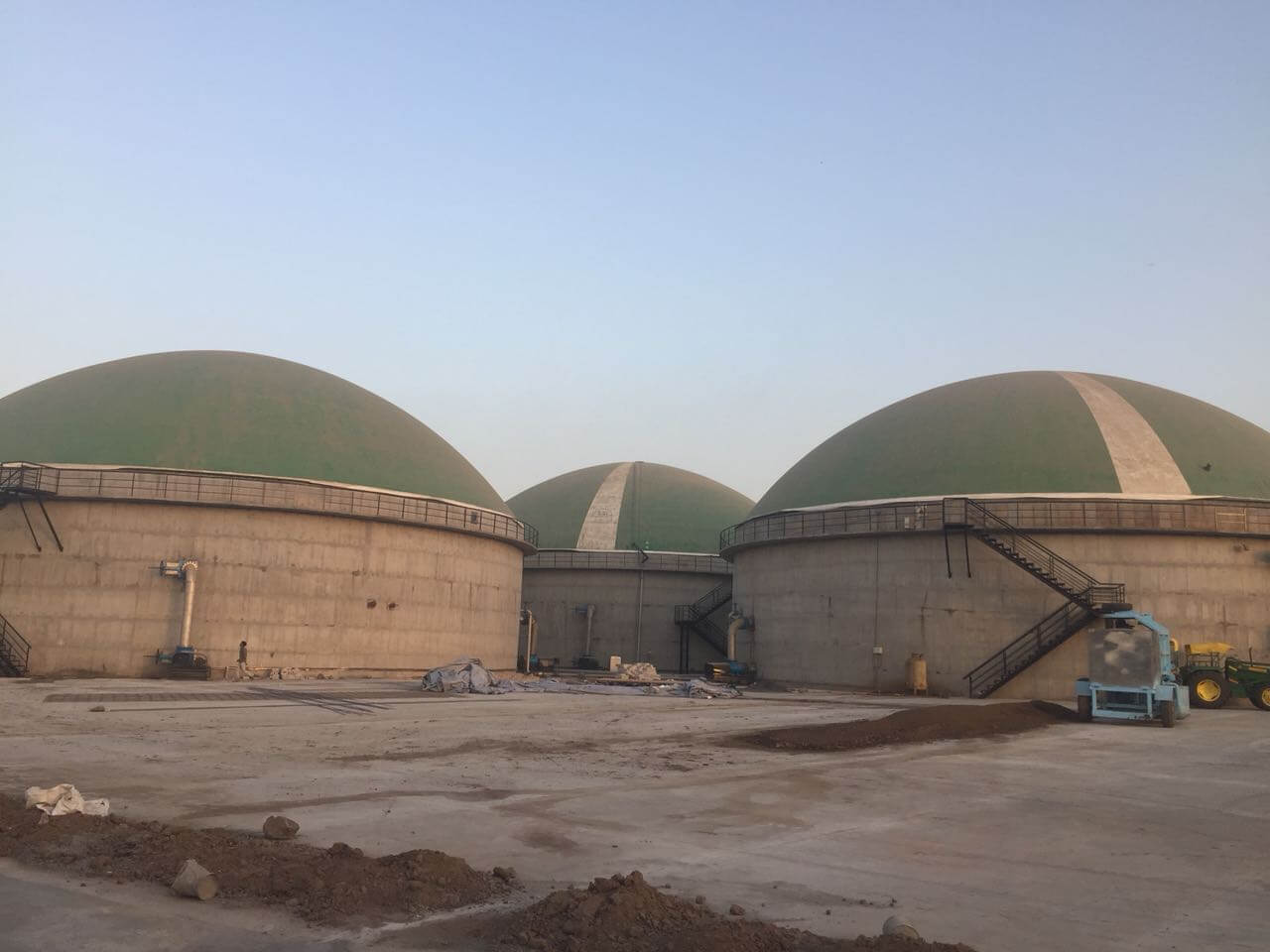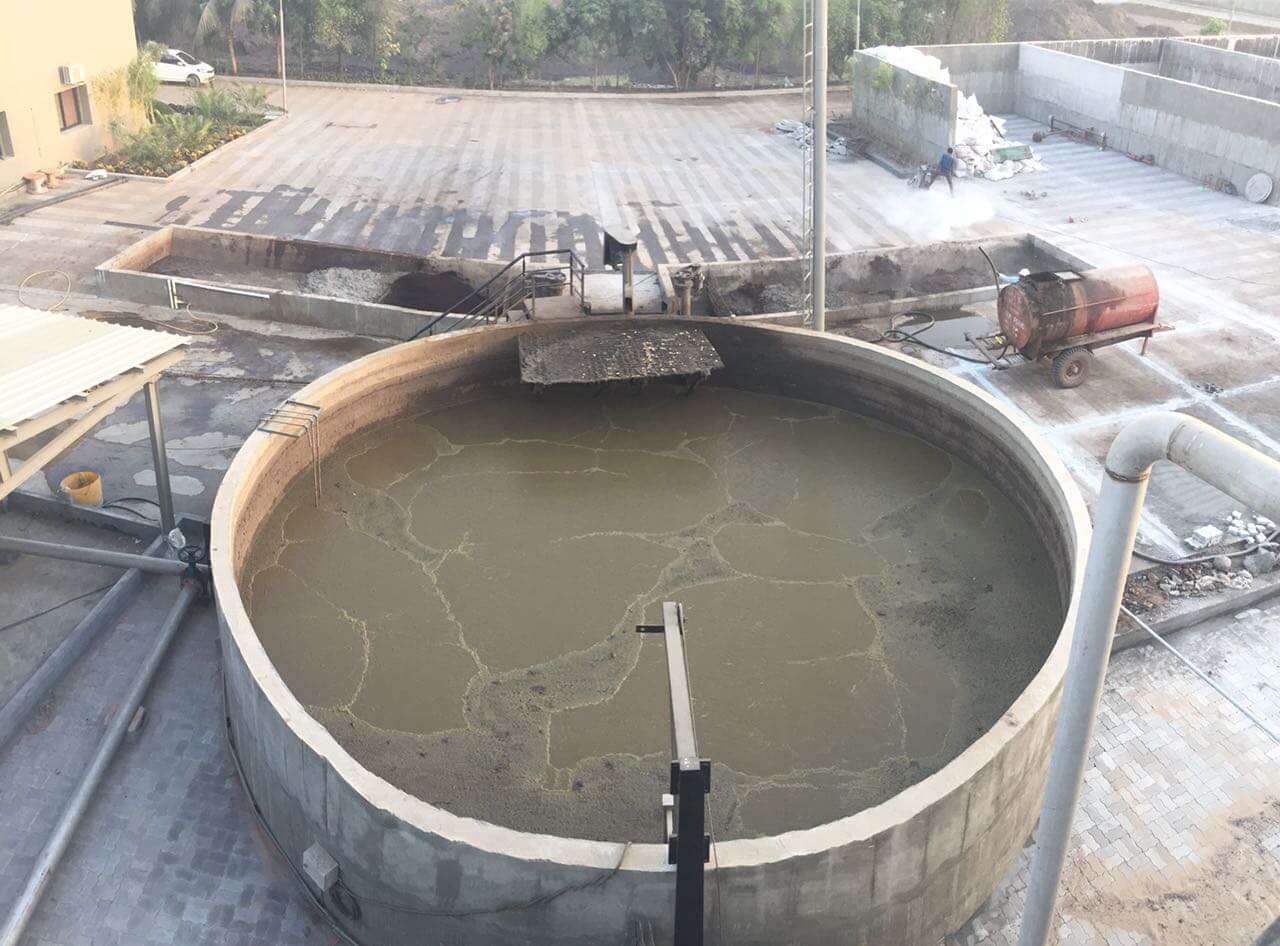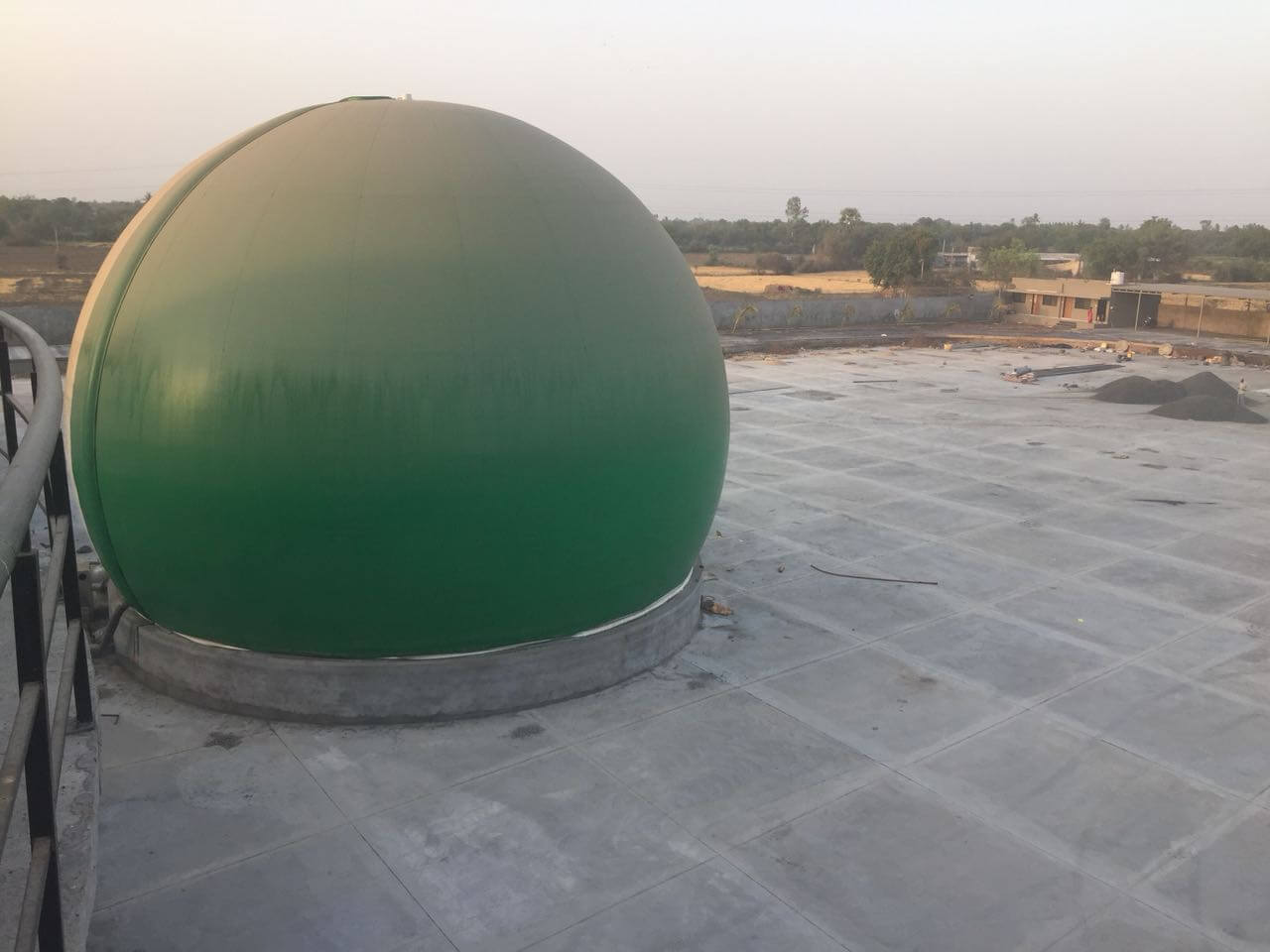Biogas Generator
BIOGAS – Anaerobic Process
Anaerobic Digestion is a biochemical process during which complex organic matter is decomposed in absence of oxygen, by various types of anaerobic microorganisms. The process is similar to many situations found in nature as in the stomach of ruminants such as cows.
Biogas from landfills, digesters, etc. mainly comprises of methane (CH4), Carbon dioxide (CO2), Nitrogen (N2), Oxygen (O2), Hydrogen Sulfide (H2S) and Water (H2O).
The raw biogas has low calorific value as it contains the above-mentioned impurities. Hence it is significant to upgrade the biogas so as to use it for transportation fuel, grid injection or industrial heating purpose in order to match the composition and qualities of LPG and CNG ( BNG/RNG )
We offer complete solution to Upgrade and Purify the Bio Gas to recover the Methane from Bio Gas.

BioCNG / BioRNG Installation
In a Bio-CNG installation, the outcome of the Anaerobic Digestion process is the BioCNG and the digestate.
Feed-stock for Anaerobic Digestion
Various biomass types can be used as feed-stock for substrates for the production of Bio-CNG from Anaerobic Digestion. Some of them are:
- Animal manure and slurry.
- Agricultural residue and by-products such as horticulture, fruit, vegetables.
- Digestible organic wastes from food and ago-industries of vegetable.
- Digestible wastes from animal origin.
- Wastes from sugar processing, molasses preparation and fermentation, cereals, edible oils, cocoa, tea and tobacco preparation and processing, baking and confectionery industry.
- Wastes from alcoholic and non-alcoholic beverages.
- Dedicated energy crops such as maize, corn etc.
- Organic fraction of municipal waste of vegetable and animal origin, household waste and similar commercial, industrial and institutional wastes and waste from catering.
- Sewage sludge, off-site waste from water treatment plants.
- Wastes from wood processing, furniture pulp, paper and cardboard production and processing.
- Wastes from the leather and textile industries.
- Garden and park waste.
The Various Process and Steps to Upgrade / Purify the Bio Gas are:
Hydrogen Sulphide Removal
Biogas is compressed at 1 bar and fed into the Biogas upgrading system. Biogas upgradation starts with H2S removal unit. In the Biogas upgrading process the first and the foremost step is the removal of H2S from the Biogas. H2S content in biogas is typically below 1%. But it may vary based upon the raw material used for biogas generation. B-Sustain use activated carbon with catalyst to achieve the H2S content below 20 ppm.
Moisture Removal
After the removal of the hydrogen sulphide from biogas, the next component to be removed is moisture (H2O). Initially the biogas contains moisture content from 5 to 8%. B-Sustain removes the moisture from the biogas by cooling the biogas below 5°C. It is necessary to remove H2O before removing CO2 in VPSA.
Gas Analyzer B-Sustain uses online gas analyzer to monitor the inlet biogas composition & outlet gas purity. The major components under analysis are CH4, CO2, H2O & H2S. B-Sustain use NDIR & Electro chemical method in gas analyzer.
Carbon-Di-Oxide Removal B-Sustain use VPSA technology for removal of Carbon-di-oxide (CO2). CO2 is adsorbed on a molecular sieve with the aim of achieving the Natural gas quality, in other words improving the methane percentage in biogas. After many cycles’ duration, the adsorber vessel will be saturated and requires regeneration. B-Sustain achieves regeneration by reducing the pressure below the atmospheric pressure. At this pressure, CO2 will be desorbed from the molecular sieve and is blown to the atmosphere. B-Sustain introduces one or two pressure equalization steps in order to improve the methane. B-Sustains VPSA technology achieves the maximum methane purity level of 98%.
Odorizing Unit
For safety reasons, B-Sustain adds an odorant since biomethane is an odorless gas. Different types of odorants are available for Biomethane odorizing. B-Sustain use Ethyl Mercaptan as odorant.
CNG Cascade filling
B-Sustain fills the upgraded biomethane in the CNG cascade or Tube trailer at 250 bar pressure. After filling, CNG cascade or the tube trailer is supplied to the industries, Hotels & colleges for Thermal application, Power generation and Transportation fuel. Biogas fueled vehicles can reduce CO2 emissions by 75% to 200% compared with other fuels.
Grid Injection
The upgraded biomethane can also be injected into the national or regional level grid network. This can either be a high-pressure gas transmission grid or a local low-pressure gas distribution network.




